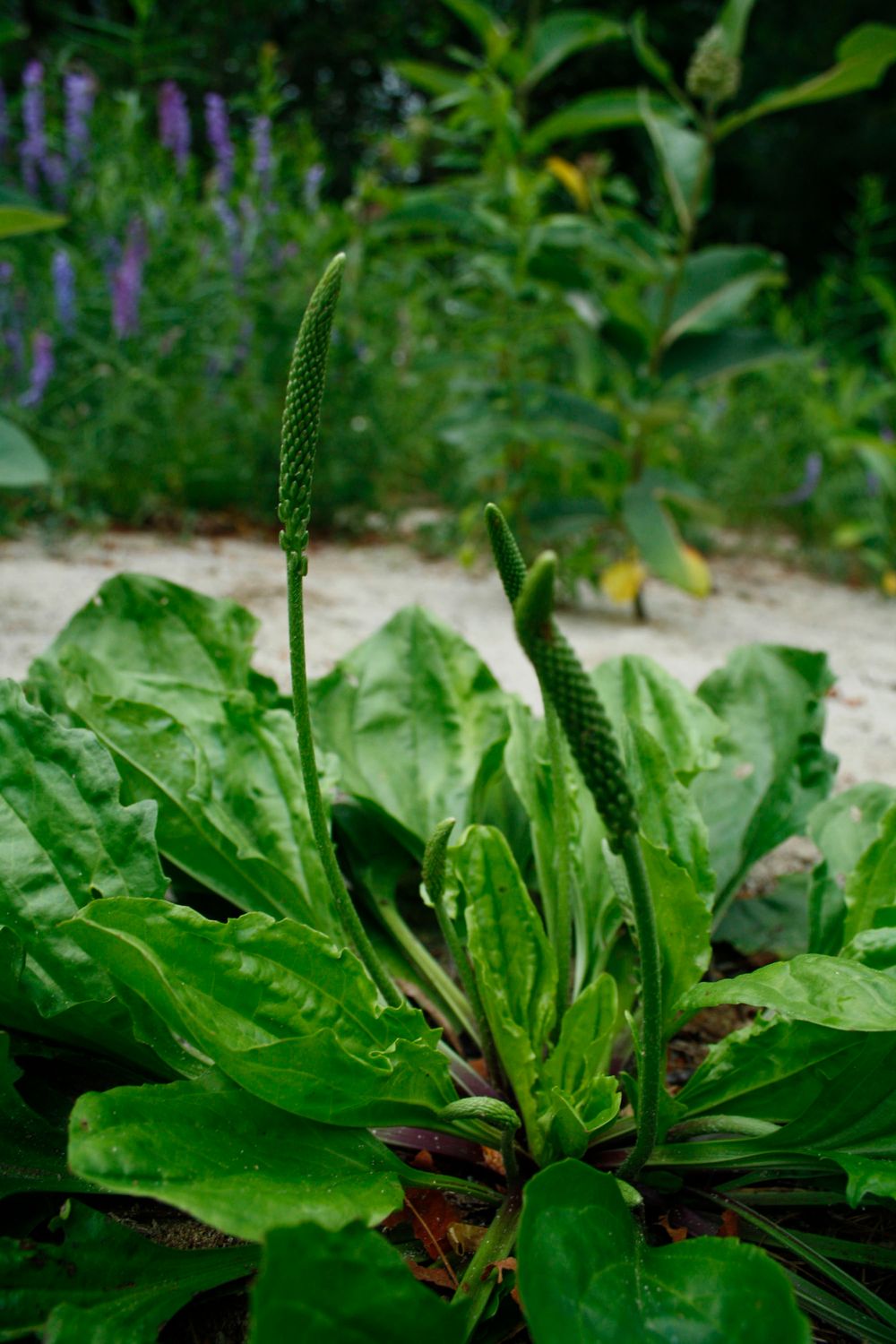Plantago rugelii, Blackseed Plantain
While the Eurasian Broadleaf Plantain, Plantago major, has become extremely common in urban areas, this native Plantain is still widely present in ecosystems with less drastic levels of disturbance and displacement.
Sharing a similar growth habit, the native Blackseed Plantain is also tolerant of challenges like compacted soils, foot traffic and mowing. A large plantain, these grow 4” to 12” tall and 8” to 16” wide with leaves that can be as much as 6” across if they are particularly happy with their growing conditions.
While they are distinguishable from their Eurasian cousins by the burgundy colouration where their leaves join their crown and their overall size, the easiest, and most conveniently timed for seed gathering, distinguishing feature is the shape of their seed pods which are more elongated or oval shaped in the native species and proportioned more like an egg in an egg cup in the introduced species.
They have edible foliage, generally harvested while tender in the spring, and the skin soothing properties that the Plantain family is well known for. They thrive in full sun and in light shade and grow well in average to low nutrient soils.
I planted a double row of these along the edge of the ‘lawn’ in my Vanier backyard last fall as part of transitioning the turf area to native species. I think that their clumping, rather than running, approach to life will create a nice boundary between the lower growing species and the taller plants in the garden area.
The other native species I’ve been planting in the Vanier ‘lawn’ are Wild Strawberry, Lance-leaved Self-heal and Woolly Blue Violets. I may also try adding some Nodding Fescue and some Fowl Bluegrass this summer, in the shadier and damper spaces respectively, to see how well these native grasses tolerate regular trimming. In a sunnier, drier setting I’d plant them with Poverty Oat Grass and Field Pussytoes, along with the Strawberries and Self-Heal.
